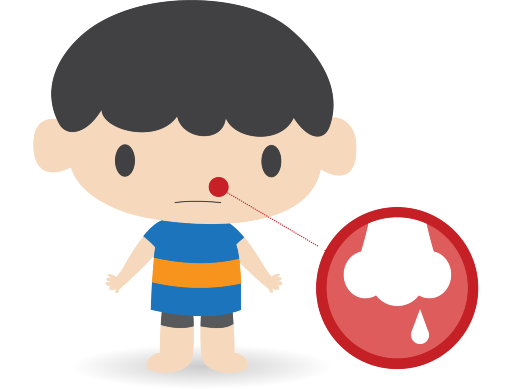Treatments Childhood illnesses Epistaxis

Epistaxis in Children: Understanding and Managing Nosebleeds
Epistaxis, or nosebleeds, are a common occurrence in children. Understanding the causes, implementing preventive measures, and knowing how to administer appropriate first aid can help parents and caregivers alleviate concerns and provide comfort to their children.
Epistaxis, commonly known as a nosebleed, is a common occurrence among children. While it may seem alarming to parents, nosebleeds in children are often not serious. However, it is essential for parents and caregivers to have a good understanding of the causes, prevention, and appropriate first aid measures to ensure the well-being of their children. In this article, we will delve into the world of childhood epistaxis, providing useful insights and guidance for parents.
Understanding Epistaxis:
Epistaxis refers to the bleeding from the nose, and it can be caused by various factors. In children, the most common cause of nosebleeds is the drying out of the nasal membranes. The delicate blood vessels in the nose can become irritated and rupture due to factors such as dry air, nose picking, or forceful blowing of the nose. Other causes can include trauma to the nose, allergies, respiratory infections, foreign objects lodged in the nose, and certain medical conditions like bleeding disorders or high blood pressure.
Prevention Measures:
While it may not be possible to prevent all nosebleeds, there are measures parents can take to reduce the likelihood of their occurrence:
Managing a Nosebleed:
If your child experiences a nosebleed, it is essential to remain calm and take the following steps:
When to Seek Medical Attention:
In most cases, nosebleeds in children can be managed at home. However, certain situations warrant medical attention:
Role of Homeopathy
When it comes to epistaxis; Homeopathy offers a wide range of medicines which are selected based on symptoms, constitution, personality, etc. as mentioned above it is not a serious problem unless it continues for a long period of time. At Dr. Singh’s Homeopathy we believe in rapid, gentle, and permanent cure. If your child or someone you know are facing nosebleeds feel free to contact Dr. Singh’s Homeopathy.
Conclusion:
Epistaxis, or nosebleeds, are a common occurrence in children. Understanding the causes, implementing preventive measures, and knowing how to administer appropriate first aid can help parents and caregivers alleviate concerns and provide comfort to their children. By keeping the nasal passages moist, maintaining humidity levels, promoting proper nose hygiene, and addressing underlying conditions, parents can reduce the likelihood of nosebleeds in their children. In the event of a nosebleed, remaining calm, positioning the child correctly, applying pressure, and seeking medical attention when necessary are crucial steps to manage the situation effectively. Remember, most nosebleeds in children are not serious and can be resolved with proper care and attention.

